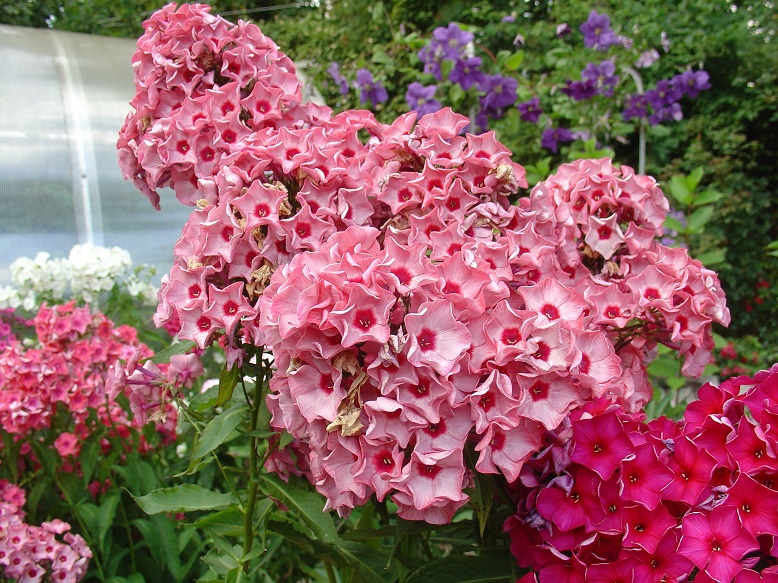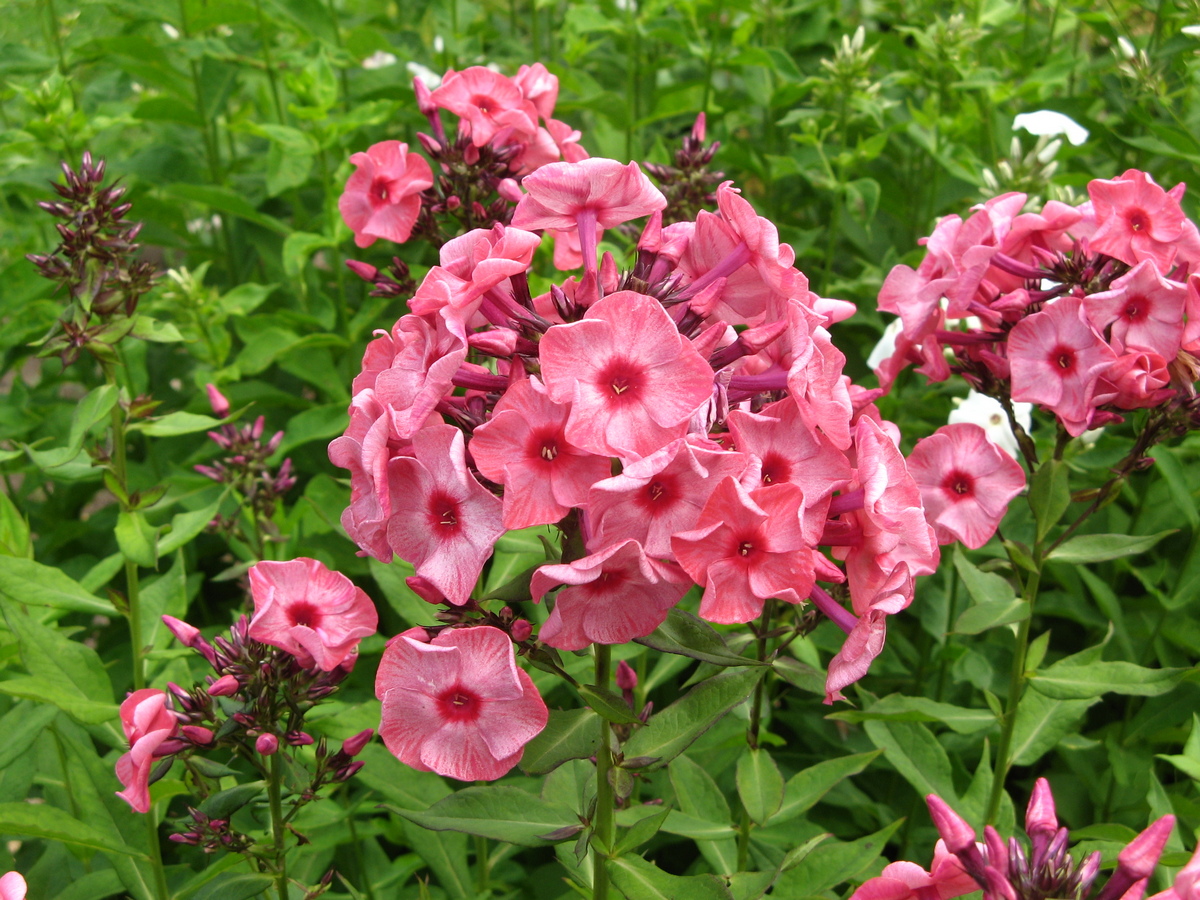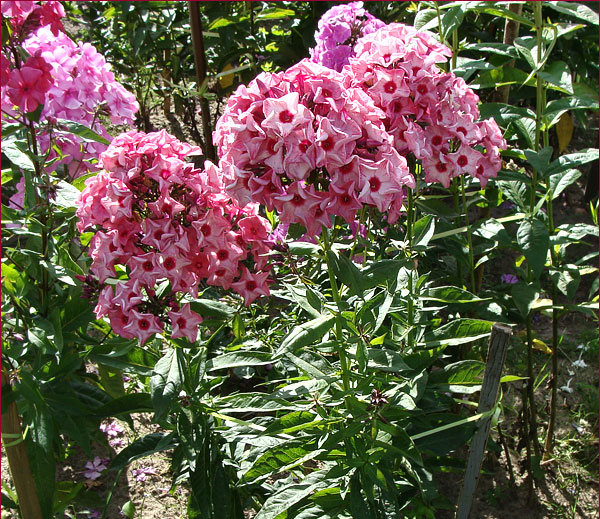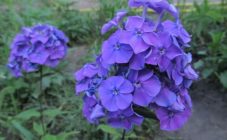Content:
These are very beautiful and attractive flowers. They are characterized by increased resistance to diseases and frost. Phlox Uralskie skazy (Ural Dawns, or Ferris Wheel) - this is beauty in a garden or summer cottage until late autumn.
History
The homeland of phlox is North America. Flowers appeared in Europe over 250 years ago. Best of all, they took root in England, from there they spread to other countries. They appeared in Russia about 150 years ago.
The phlox variety Uralskie Skazy was bred in 1953 by the domestic breeder P. Gaganov. The variety is specially adapted to the conditions of the Russian winter.
Flower description
Gardeners engaged in planting flowers are interested in the description of phlox Ural tales. It is a perennial plant that is resistant to winter frost and does not require special care. Because of this, it is widely distributed in gardens and flower beds. Garden phloxes have bare and smooth stems. They are rarely covered with light down.
The height of this paniculate phlox is from 40 cm to 1.5 m.Taller specimens are less common. The leaves are opposite. Their shape and size are different. In spring, the color of the leaf plate can acquire a wide variety of colors: light green, lilac, purple, cherry, brown, brown. As the shoot grows back, the shade of the leaf turns green.
Phlox flower is five-petalled. The color can vary from white to black-violet and dark cherry. Sometimes the color of the petal contains haze, multi-colored strokes, spots and other shapes. The size of the corolla of this flower is varied and ranges from 0.5 to 5.5 cm; there are also larger specimens.
Flowers are concentrated in inflorescences - panicles. In a garden phlox, they can have all sorts of characteristics.
Duration of flowering is 45 days or more. Flowers exude a pleasant aroma all the time. Bloom in July-August.
The root of the plant is very powerful, about 25 cm deep.
Flowers do not fade in the sun. They are also resistant to low temperature background. They grow quickly enough, which allows you to create beautiful and unique compositions.
Planting and leaving
Phlox care consists in performing simple actions.
Landing
Planting is carried out in early spring. When planting phlox, you must adhere to certain rules:
- The soil must be moistened and plowed. At the place where the planting is planned, there should be no stagnant water. If it is too close to the surface, then the plant may die in high humidity conditions. The best place for phlox is a small knoll where there is no high ground water level.
- It is forbidden to plant phlox near bushes and trees. In such a place, the plant will lack moisture and sunlight.
- The place should be chosen so that it has a sufficiently sunny color, but in the hottest hours it is slightly darkened.
Care
During leaving, you should adhere to such simple recommendations:
- so that the flowers are bright, mineral fertilizers are periodically applied to the soil;
- during the dry period, the flower bed is watered (while it is necessary to ensure that the soil is not too wet);
- in the snowless period, the phlox must be covered;
- with periodic pruning of the bush, the flowers will remain large all the time (there should be up to 7 flowers on one shoot).
In the spring, it is advisable to feed the plant with complex mineral fertilizer. Organic fertilizers can be applied as mulch: humus or compost.
Reproduction
Seeds grow in conditions of sufficient light and moisture. In cold climates, seed germination is possible in a greenhouse. They are covered with foil.
Every day you need to shake the condensate from the film, moisten the soil. After the sprouts appear, you need to add a little earth. Plants dive 2 weeks after germination. Seedlings grown in this way are transplanted into the garden around mid-May. At the same time, you can sow seeds in open ground.
Phlox bush can be divided in fall or winter. The best time for this is September. The age of the bush intended for division is 3 to 5 years. It is impractical to take older plants. The bush is dug up, divided into several parts. They must be transplanted to a new location immediately.
In the second half of summer, plants reproduce with the help of axillary shoots. They need to be very carefully broken down, rooted and planted whole. These cuttings are quickly adopted and grow well.
Advantages and disadvantages
Plant benefits:
- a large number of color options for flowers;
- the plant's resistance to frost and cold winters, due to which it blooms every year;
- has leaves of a very beautiful green hue;
- differs in long flowering until the end of the warm period;
- does not require complex care, making it suitable for gardeners and summer residents without experience in growing ornamental plants;
- easily reproduces by vegetative methods.
The disadvantages of this variety include a tendency to certain pathologies:
- white spot or powdery mildew (appears on overly moist areas);
- stem nematode (the leaves curl, the top turns yellow).
Phlox varieties Uralskie skazki amaze the imagination with their colors and beautiful flowers. The plant is great for creating landscape and design compositions, decorating any area.















